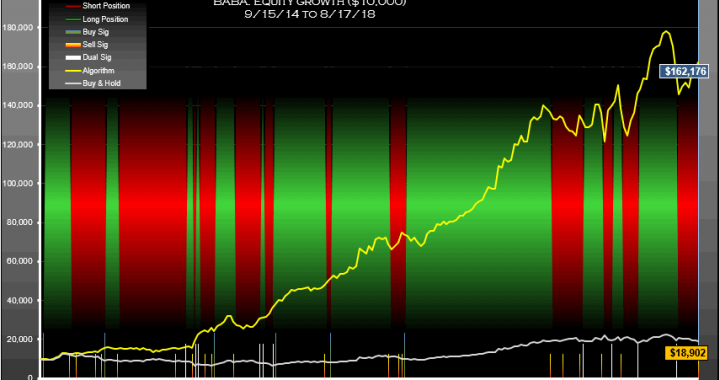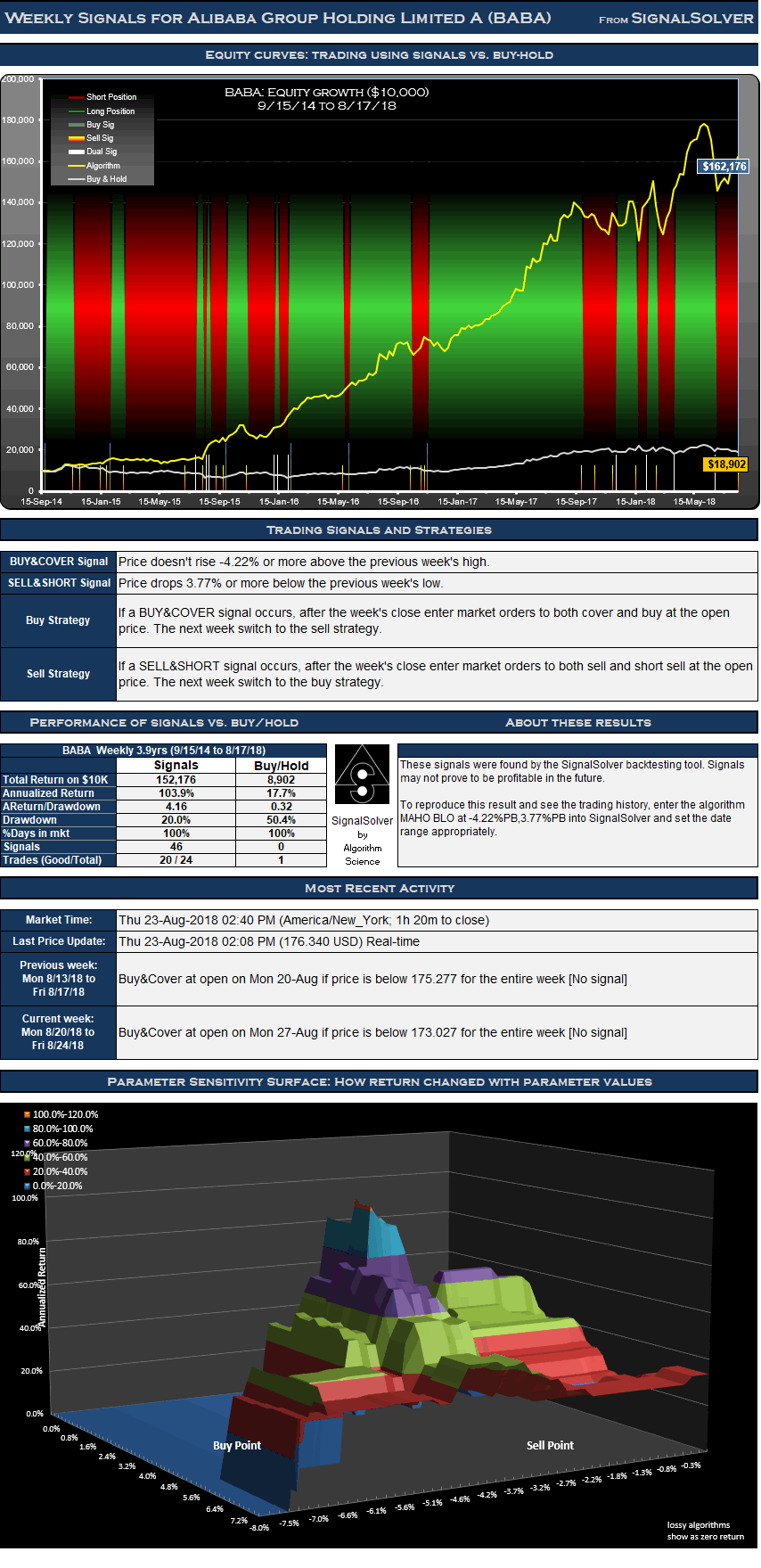From Jul 2008 to Aug 2018, these trading signals for Alibaba (BABA) used as directed would have performed around 14 times better than buy-hold.
These trading signals for BABA were selected from 1,173,290 backtest results for their reward/risk and parameter sensitivity characteristics.While backtests don't always provide reliable signals which can be counted on moving forward, many swing traders find value in knowing what buy and sell signals could have been used in the past.
For the 205 week (3.9 year) period from Sep 15 2014 to Aug 17 2018, these signals for Alibaba Group Holding Limited A (BABA) traded long and short would have yielded $152,176 in profits from a $10,000 initial investment, an annualized return of 103.9%. The long-side profit (buy/sell only, no shorts) for the signals was $50,880, an annualized return of 58.7%. If you had bought and held the stock for the same period the profit would have been $8,902 (an annualized return of 17.7%). The trading style was Long & Short, meaning that you would be long or short the security at all times.
For this type of strategy, not every signal is acted upon and signals are often reinforced. If you are long in the security, buy signals can be ignored, for example. Similarly if you are short you can ignore sell signals. For this particular BABA strategy there were 16 buy signals and 30 sell signals.These led to 12 long trades of which 9 were profitable, and 12 short trades of which 11 were profitable.
This is a weekly strategy; weekly OHLC data is used to derive all signals and there is at most one buy and sell signal and one trade per week. Drawdown (the worst case loss for an single entry and exit into the strategy) was 20% vs. 50% for buy-hold. Using drawdown plus 5% as our risk metric, and annualized return as the reward metric, the reward/risk for the strategy was 4.16 vs. 0.32 for buy-hold, an improvement factor of around 13.0

